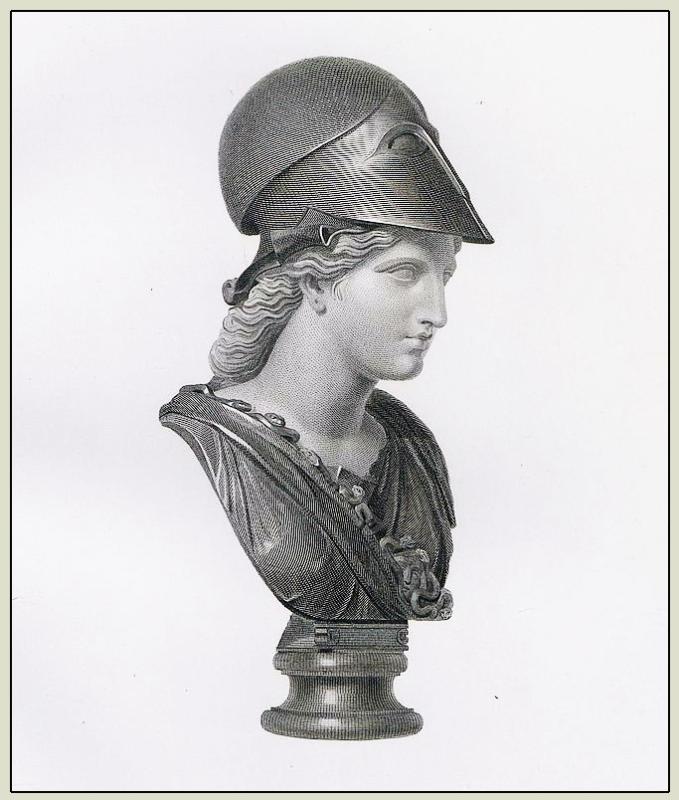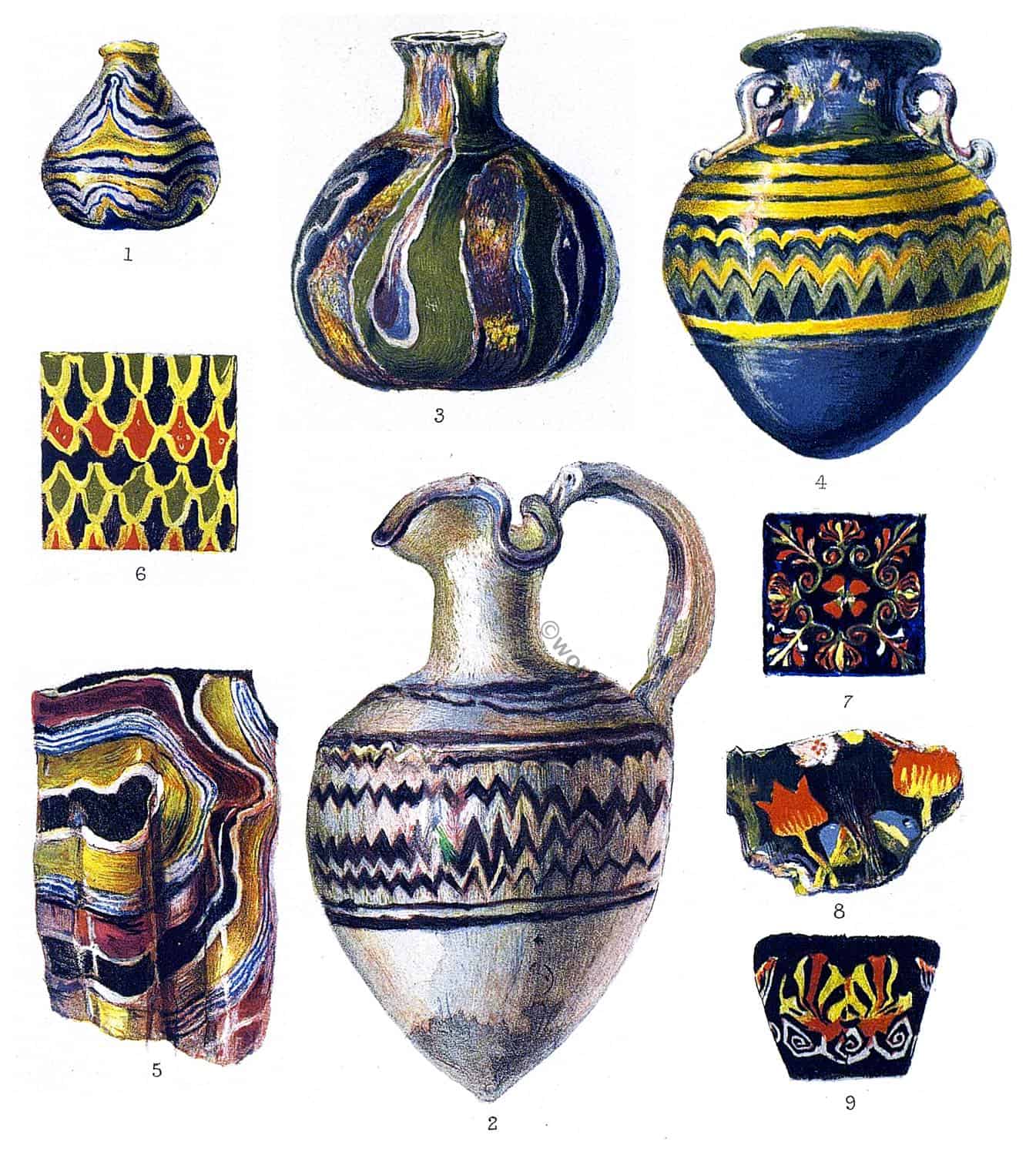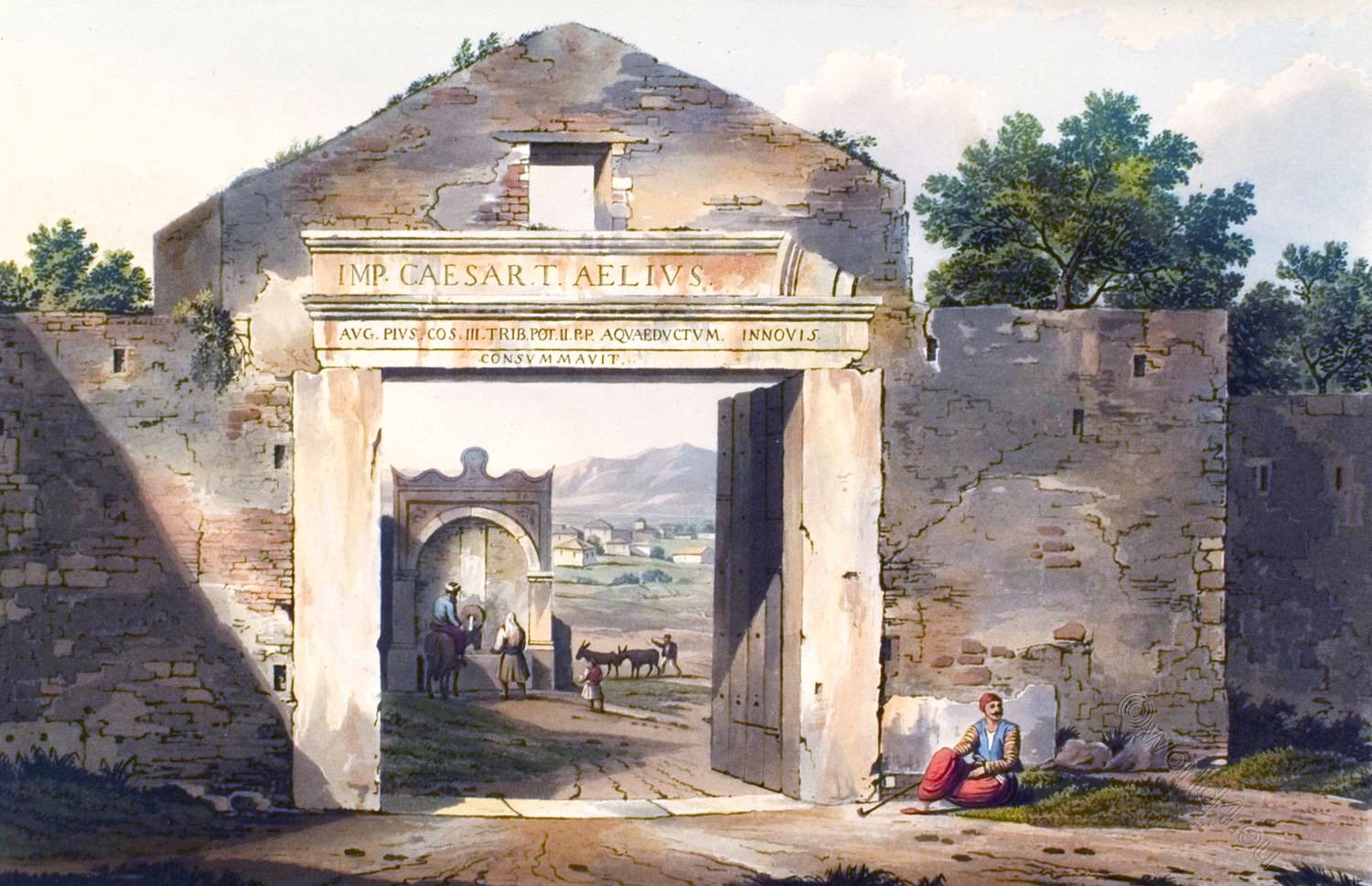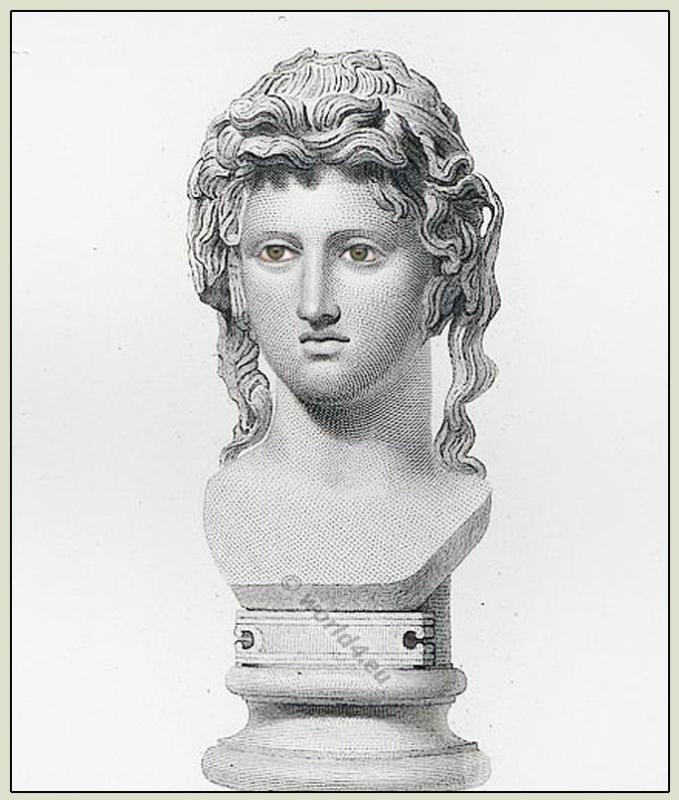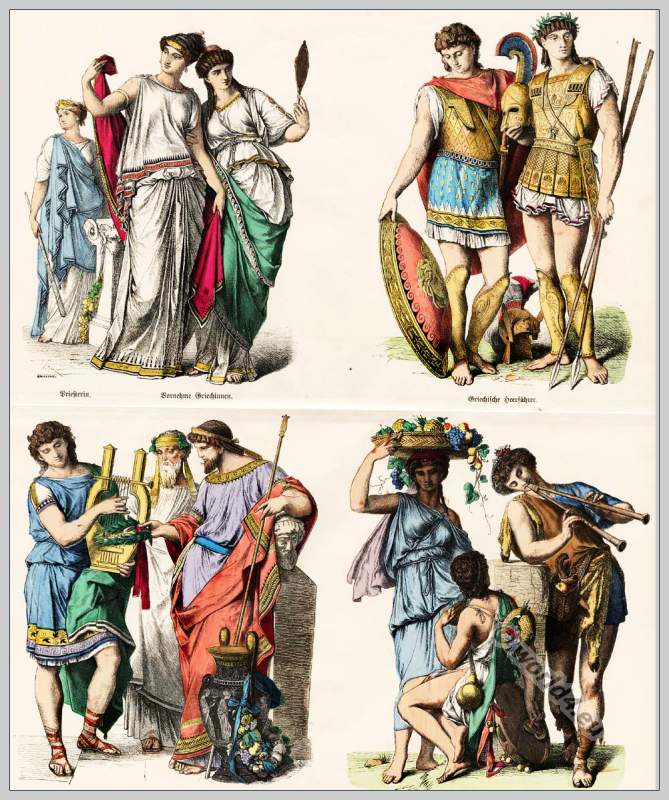Bust of Minerva.
The eyes are now filled with plaster, but originally, no doubt, were formed of onyx or some similar material, in imitation of the natural eye. The hair flow away from the forehead, and falls behind the neck in one solid tress, not unlike the hair on some of the caryatides. This arrangement is one of the most common characteristics of this goddes. The ears have been pierced for the reception of era-rings.
The original and pure character of the head of Minerva is shown by a broad and smooth forehead, a long and finely-shaped nose, and a cast of countenance about the mouth and cheeks slightly stern; a somewhat angular chin; the eyes not fully opened, but slightly downcast, with the hair artlessly carried back along the brow, falling down upon neck.
Many busts similar to this may be recognized in the collections of Europe; perhaps that in the Villa Albani, at Rome, most nearly resembles the one under review. In general character, too, there is much coincidence between this bust and the so-called Athene Skiras, now in the Casino Rospigliosi at Rome. The helmet and the drapery, which are restored in bronze, are said to have been copied, with some variations, by Albacini from an ancient bust of Minerva, engraved in the six volume of Visconti`s Museo Pio Clementino; and the holes to which an ancient bronze helmet was once attached still remain. The head on a statue in the Louvre, called the Minerva of Vellétri, and also on that attributed to Antiochus, a sculptor of Athens, now in the library of the Villa Ludovisi at Rome, exhibit much analogy with this bust.
This bust was found in the year 1784 in the villa Casali, among ruins supposed to have belonged to the baths of Olypiodorus. It has been engraved in the Specimens of Ancient Sculpture, published by the Society of Dilettanti.
The head only is antique; the nose and the under part of each eye have been restored; it is in Parian marble *); and its entire height, without the pedestal, 2 feet 3 inches.
*) Parian marble is a fine-grained, white marble from the Greek island of Paros. Pliny names him in his Naturalis historia and uses the term lychnites. Among the famous ancient sculptors who worked with Parian marble is Praxiteles. The most famous statue made of Parian marble is probably the Venus of Milo. The temple of Apollo in Delphi as well as the gable sculptures of the temple of Aphaiat on Aegina are among the important antique buildings with Parian marble.
Source: A description of the collection of ancient Marbles in the British Museum by Combe Taylor, London 1861.
Related
Discover more from World4 Costume Culture History
Subscribe to get the latest posts sent to your email.

